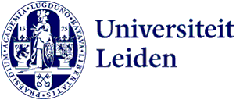Remote Work and Productivity: Analyzing the Mediating Effect of Work-Life Balance

Main Article Content
Abstract
This study explores the relationship between remote work, employee productivity, and work-life balance, with a specific focus on the mediating role of work-life balance. Given the rise of remote work in various sectors, particularly in the IT industry, it becomes crucial to understand how remote work influences employee productivity and how work-life balance may play a central role in this relationship. A quantitative, cross-sectional design was used, surveying 110 IT professionals from Kathmandu Valley, Nepal. A pre-tested Likert scale questionnaire collected data, measuring variables such as work-life balance, employee productivity, and remote work. Descriptive analysis revealed that most respondents worked remotely (42.7%) or in a hybrid setup (37.3%). While the mean score for work-life balance (3.45) suggested a generally positive perception of remote work's role in balancing personal and professional lives, challenges like difficulty disconnecting and burnout were noted. Employee productivity ratings highlighted that work-life balance positively impacted productivity (mean = 3.83). The remote work factor demonstrated moderate satisfaction with tools, communication, and goal clarity but indicated areas for improvement, especially in technical support (mean for remote work = 3.55). Correlation analysis showed strong positive relationships between work-life balance, remote work, and employee productivity (p < 0.01). The study concludes that work-life balance acts as a key mediator between remote work and productivity, underscoring its importance in fostering an efficient remote working environment. Though employees report a generally positive view of remote work’s ability to provide flexibility, issues with communication and technical support may hinder overall productivity. Thus, improving these areas could maximize remote work's benefits.
Downloads
Article Details

Authors retain copyright and grant the journal right of first publication with the work simultaneously licensed under a Creative Commons Attribution-NonCommercial-ShareAlike 4.0 International License that allows others to share the work with an acknowledgement of the work's authorship and initial publication in this journal.
References
Acharya, S., Shrestha, S. K., Neupane, D., & Mahat, D. (2024). Exploring Green Finance Practices for Advancing Sustainable Development in Nepalese Banking Sector. NPRC Journal of Multidisciplinary Research, 1(8), 23-34. Retrieved from https://doi.org/10.3126/nprcjmr.v1i8.73024
Bal, Y., & Bulgur, N. E. (2023). Remote Work: A Paradigm Shift in the Modern Workplace and Its Impact on the Workforce. Remote Work: A Paradigm Shift in the Modern Workplace and Its Impact on the Workforce, 374-391.
Felstead, A., & Henseke, G. (2017). Assessing the Growth of Remote Working and its Consequences for effort,Well-being and Work-life Balance. Assessing the Growth of Remote Working and its Consequences for effort,Well-being and Work-life Balance, 195-212.
Gorjifard, R., & Crawford, J. (2021). Working from Home: Impact on Wellbeing and Work-Life Balance. New Zealand Journal of Employment Relations, 46(2), 64-78.
Ivasciuc, I. S., Epuran, G., Daniela Roxana Vut, ă., & Bianca Tescas, i. (2022). Telework Implications on Work-Life Balance, Productivity, and Health of Different Generations of Romanian Employees. Sustainability, 14(23). Retrieved from https://doi.org/10.3390/su142316108
Karki, T. B., D’Mello, L., Poudel, G., Ghimire, M., Neupane, D., Shrestha, S. K., & Mahat, D. (2024). Exploring the Influence of Family Dynamics on Death Attitude among Elderly People: A Comparative Study of Chitwan and Jhapa District, Nepal. International Journal of Applied and Scientific Research, 2(8), 703-716. Retrieved from https://doi.org/10.59890/ijasr.v2i8.2400
Kurdy, D. M., Al-Malkawi, H.-A. N., & Rizwan, S. (2023). The impact of remote working on employee productivity during COVID-19 in the UAE: the moderating role of job level. Journal of Business and Socio-economic Development, 2635-1374.
Mahat, D. (2023). Unveiling Faculty Performance through Student Eyes: A Comparative Study of Perspectives. Formosa Journal of Multidisciplinary Research, 2, 1575-1596.
Mahat, D., & Agrawal, C. (2019). Gender Perspective on career development and opportunity in health service organization of Nepal. World Wide Journal of Multidisciplinary Research and Development.
Mahat, D., & Aithal, P. S. (2022). Women’s Articulates towards Career Advancement. International Journal of Management, Technology, and Social Sciences, 7(1), 417-424. Retrieved from https://doi.org/10.5281/zenodo.6640891
Marzec, M., & Szczudlińska-Kanoś, A. (2023). The Importance of Work Life Balance for Contemporary Management and Public Policies. European Research Studies Journal, 16(1).
Nagaprakash, T., Patil, S., J, S., Narasuraman, J., & Kumar, P. A. (2024). The Impact of Remote Work on Work-Life and Employee Productivity. SRA journal, 658-669.
Orešković, T., Milošević, M., Košir, B. K., Horvat, D., Glavaš, T., Sadarić, A., . . . Orešković, S. (2023). Associations of working from home with job satisfaction, work-life balance, and working-model preferences. Frontiers in Psychology, 14. Retrieved from https://doi.org/10.3389/fpsyg.2023.1258750
Parajuli, S. K., Mahat, D., & Kandel, D. R. (2023). Innovation and technology management: investigate how organizations manage innovation and stay competitive in the modern business landscape. World Journal of Advanced Research and Reviews, 19(03), 339-345.
Parajuli, S. K., Mahat, D., & Lingden, B. (2022). Organization Learning, Dissemination of Knowledge and Organizational Performance in Nepalese Banking Sectors. Nepal Journal of Multidisciplinary Research, 5(5), 75-85. Retrieved from https://doi.org/10.3126/njmr.v5i5.51806
Pensar, H., & Rousi, R. (2023). The resources to balance – Exploring remote employees’ work-life balance through the lens of conservation of resources. Cogent Business & Management, 1-28.
Purushothaman, D. S. (2024). The Effects of Remote Work on Productivity and Well-Being among IT. African Journal of Biological Science, 2124-2130.
Rai, N., Khadka, N., Rai, M., Shrestha, P., Lekhak, M., Shrestha, M., & Mahat, D. (2024). Rise of Foreign Employment and Challenges Faced by Nepali Youth in the Domestic Job Market. International Journal of Applied and Advanced Multidisciplinary Research, 2(7), 497-508.
Rañeses, M. S., Nisa, N. u., Martir, S., & Bacason, E. S. (2022). Investigating the Impact of Remote Working on Employee. International Journal of Business and Administrative Studies, 63-81.
Shrestha, I., Pun, D., Basnet, I., Koirala, K., & Mahat, D. (2025). Adolescents in the Gaming Zone: A Study on Depression, Anxiety, Loneliness. International Journal of Applied Educational Research, 2(6), 439-454. Retrieved from https://doi.org/10.59890/ijaer.v2i6.55
Find the perfect home for your research! If this journal isn't the right fit, don't worry—we offer a wide range of journals covering diverse fields of study. Explore our other journals to discover the ideal platform for your work and maximize its impact. Browse now and take the next step in publishing your research:
| HOME | Yasin | AlSys | Anwarul | Masaliq | Arzusin | Tsaqofah | Ahkam | AlDyas | Mikailalsys | Edumalsys | Alsystech | AJSTEA | AJECEE | AJISD | IJHESS | IJEMT | IJECS | MJMS | MJAEI | AMJSAI | AJBMBR | AJSTM | AJCMPR | AJMSPHR | KIJST | KIJEIT | KIJAHRS |




















